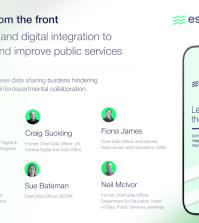New Zealand develops new tool for social service providers showing where children are at risk

Social service providers, public sector organisations and NGOs in New Zealand are now able to use a new interactive tool which draws together information from across the public sector to show where children and young people are at higher risk.
The Social Investment Insights tool has been developed the Treasury and Statistics New Zealand with data from various departments including health, education and justice.
By using the tool, providers of social services can generate maps for the whole of New Zealand or for specific regions and territorial authorities. These maps show where children and young people are at higher risk of poor outcomes in a specific area, what this means for their future outcomes, and some of the associated costs to government.
They can pick out specific age groups and map risk groups specific to that group.
Data can also be presented for males and females separately, or for all children or all youth in the age group.
The tool is based on a research paper which identifies four key indicators closely linked to poor outcomes in later life: A finding by Child, Youth and Family (CYF) – the government agency safeguarding children who are being abused or neglected or who have problem behaviour – of abuse or neglect; being supported by benefits for most of their life; having a parent with a Corrections sentence; and having a mother with no formal qualifications.
Children with these characteristics are more likely to have poorer educational attainment, be on a benefit long-term, and to serve a prison or community sentence.
“By gaining a clearer understanding of indicators associated with poor outcomes, social sector and community organisations can identify where best to invest early, rather than deal with problems after they have emerged,” Fiona Ross, Treasury deputy secretary, budget and public services, said.
Ross, who leads the Treasury’s work on raising living standards, added: “We want to understand more about who is most at risk of poor outcomes.
“This sort of cross-agency data helps us identify groups of people who need support and invest government funds in services that work.”
Ross said that while the numbers of adults experiencing poor outcomes is concerning, the purpose of the Characteristics of Children at Risk paper is to better understand the people who need public services and to adjust services accordingly.
For up to date government news and international best practice follow us on Twitter @globegov
See also:
Interview: Gabriel Makhlouf, Treasury, New Zealand
New Zealand’s top official Iain Rennie to step down in June
Interview: Iain Rennie, state services commissioner, New Zealand
Interview: Paul Shetler, chief executive, Digital Transformation Office, government of Australia
Interview: Mike Bracken, former head of the Government Digital Service (GDS)





















